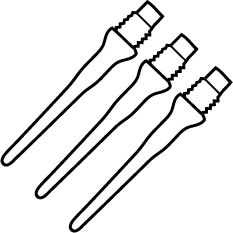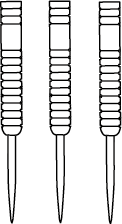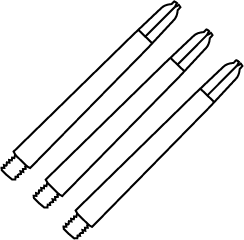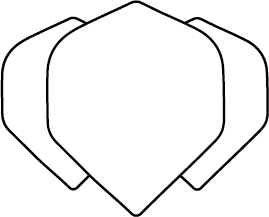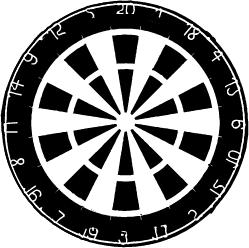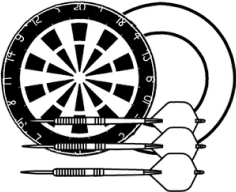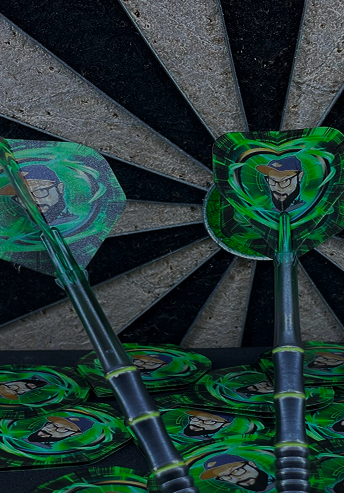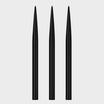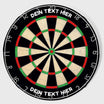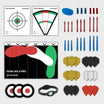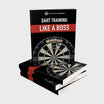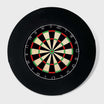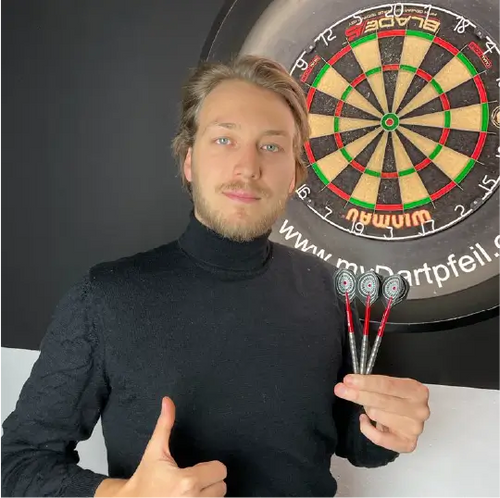Training is important. As with any other sport, your performance can only be improved through regular training. However, there are many different methods that have varying degrees of effectiveness.
In this blog post, we'd like to focus specifically on training without a partner . Which dart training games make the most sense in front of the dartboard, and how can you still create the pressure you'd expect from competition? We'll try to help you out.
170 – a classic to train the entire board for the finish area
Playing darts practice games alone may be boring for some. It lacks the thrill and pressure of competing .
Still, it can be fun to play darts alone—especially since, let's be honest, this happens much more often than playing with friends. Why is 170 better than 501 ?
The game 501 focuses too much on pure scoring , especially for beginners. To shorten the game version, you start at 170. This way, you practice asserting yourself in the finish area , placing desired numbers , and playing the entire board .
The 170 game is also a great way to measure your performance . Do you only need three darts, the minimum number, or more than nine?
Infobox: It's important that you don't just score, but also learn to play all the fields. In the long run, you'll be able to compare your training performance if you regularly record your results.
Dart training games alone – around the board
The ideal warm-up game is Around the Board, or as many people probably know it better, Around the Clock . This training game is a great way to figure out which squares you still need to practice .
You can perfect the game by practicing all the squares on the board .

In the standard version, you can set up the game so that you discard each single field from 1 to 20. You count the number of arrows you need for each field and note the number.
This way, you can check after a while which fields you still need to practice . This exercise can, of course, also be extended to double and triple fields .
Infobox: Logically, you will need a higher number of arrows for these much smaller fields.
Even combined, it makes sense to adapt the game so that, for example, you get one point for a single hit and three points for a triple hit.
In this version, you count the points you hit and aim to collect as many points as possible in the final tally. As a guide, however, we can tell you that a beginner will collect around 60 points in this version.
If you score over 100 points, you can definitely call yourself a professional player. Conversely, you can count the number of arrows you need to hit a field. Then, of course, the priority is to minimize the number of arrows.
Finishing – 10 points up, one point down
Another good idea is to regularly play through the game of Finishing on your own . The special appeal of this is finding out which finishes you're capable of and which ones you still find difficult.
So you start with 60 points . You have to check this with three darts. If you miss, your score drops to 59, or one point. However, if you do check, your remaining score increases by 10 points to 70.
You can easily play the game for an hour . Over time, you'll see where the moment comes when you repeatedly fail with three arrows.
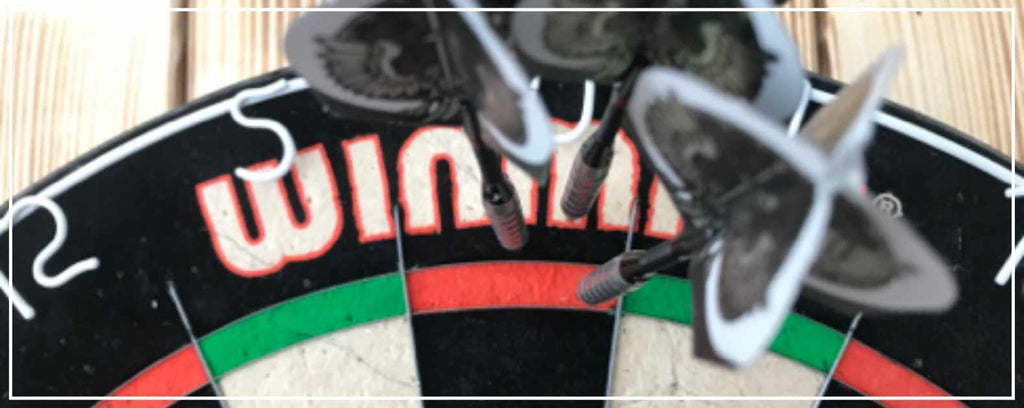
25 – the mind needs to be trained
Another good dart training game is the so-called "25." Perhaps even the best of all. Why is this? In this game, you start with a score of 25.
You now have three darts to hit each double, starting at 1 and going up to 20 via the bull's eye . The game now works as follows: If you don't hit the double with any of the three darts, the score for the double is deducted from your 25 points. For example, the calculation would be as follows:
D1 missed: 25-2=23 remaining points
If you reach 0, the game is over . Beginners can also play with negative points to continue playing to D20. But what happens if you hit the double once – or even twice?
In this case, the score is added to the 25 points . For example, if you hit the double 1 twice, 4 points are added. In this case, you would have 29 points before the double 2 throw.
This game is one of the most effective for practicing doubles under pressure . It's also excellent for solo practice.
100 x 20, 19 or 18
A rather dull practice game for at home, especially when played alone, is to fire 100 darts at a single segment. This game is particularly popular for the 18th, 19th, or 20th squares—logically, since these are the areas that should be practiced the most.
In this game, you throw at a segment 100 times in a row . A hit in the single field scores one point, a double scores two points, and a hit in the triple of the targeted segment scores three points.
At the end, you add up the points you've achieved and compare them regularly. This is a great way to monitor whether you're becoming more accurate at hitting the 20 or other high-scoring squares.
Dart training games alone – Average
One game that has relatively little significance , however, is the " Average " game. The goal here is to find out your own average .
The significance is limited because no darts are fired at the doubles. Therefore, only the average score is used as a guide. This can be practiced and calculated with 100 darts, just like the previous game.
In this case, beginners are probably satisfied with an average of around 40. Trained players will only be satisfied with an average of 60 or higher.

Dart training games alone – Cricket
As a rule, your cricket game probably always involves playing against an opponent. Otherwise, it makes very little sense. However, there is also the option of playing cricket solo.
This also works by counting darts . You try to hit the spaces 15 to 20 and the bull's-eye with as few darts as possible.
Infobox: As is customary in cricket, this is the case when three hits are scored. Here, too, the following counts: Single = 1 point, Double = 2 points, Triple = 3 points.
At the end, you add up the number of arrows you needed and can thus compare your performance relatively well – at least if you play it regularly over a certain period of time.
You haven’t had enough training games yet?
If these training games aren't enough for you, you should definitely check out our own myDartpfeil book . There you'll find over 20 training games with explanations and difficulty levels .
It also includes tips and tricks as well as a 4-week training plan .
Ready to take your skills to the next level? Discover our exclusive secrets and proven methods to optimize your game:
- Dart Doubles Training : All secrets revealed: How to become a doubles pro. Learn more and train now. Click here » including free pro tips
- Killer Darts for beginners and pros. Discover proven strategies that will lead you to victory. Click in now & play successfully! Includes insider tips! ✓
- Excitement, action, and strategy at Shanghai Dart : Our guide will guide you on your path to victory. Click here for more information! | mydartpfeil
Sofern nicht anders angegeben, unterliegt das im Beitrag gezeigte Bildmaterial mit Bezug zu Dartspielern und verwandten Themen dem Copyright der Professional Darts Corporation (© PDC).






